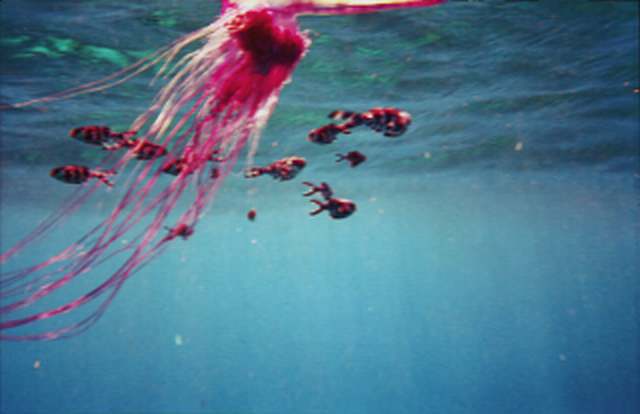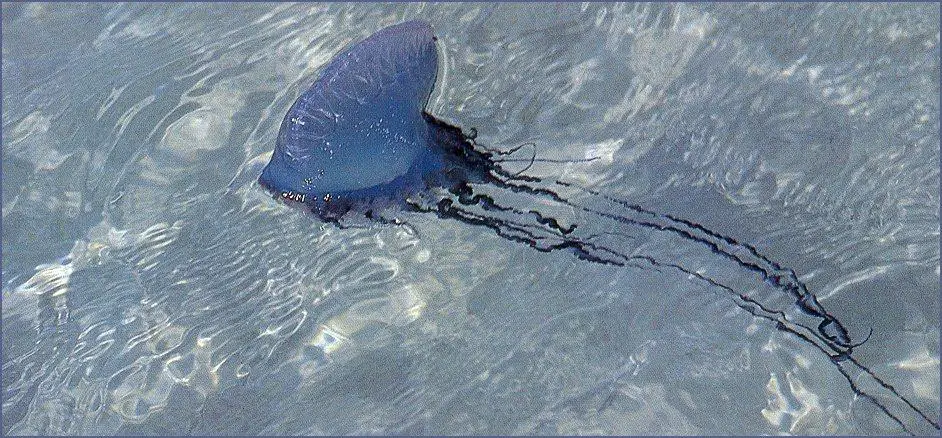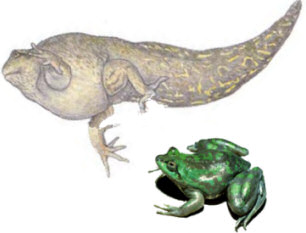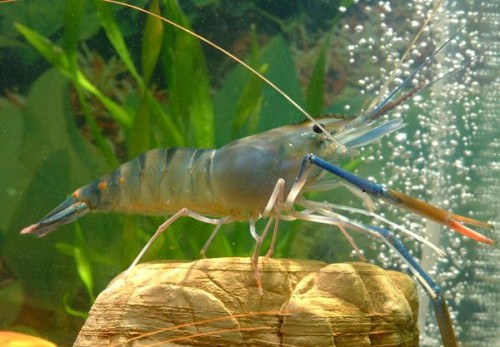Physalia
Physalia, sometimes also called “Portugese Man of War” is actually a colony made up of many polyps. This warm ocean creature deceives with its beautiful colours, but in fact it’s very dangerous. The Physalia’s venom kills quickly and efficiently.
Physalias inhabit the warm seas in the Indian and Pacific Ocean, as well as the Northern part of the Atlantic Ocean. They are easily recognizable by their 15 cm high cyst that looks like a small sail. In fact, it actually serves the same function, allowing the Physalia to drift with the wind and during storms, the Physalia lets air out of the cyst, submerging under the water, where it is in safety. Its movement being strongly controlled by the wind, this medusa is often washed ashore.
Physalias are often seen in groups of multiple thousand individuals. Every cyst shelters hundreds of polyps, which are small, primitive biological structures. Most of these polyps have long tentacles and some of them have capsules filled with venom, used for catching prey. Each Physalia is a colony of polyps that act as a single organism, and each polyp has its own function, such as paralyzing the prey or splitting it into pieces.
These medusas attack any fish they come across. A number of polyps paralyzes the fish with the venom and then use their tentacles to move the fish to those polyps under the cyst. The prey is then divided into pieces and consumed. An interesting symbiosis has been observed between the Physalia and small perch fishes – the perch fishes are immune to the medusa’s poison and they act as bait to other fish, staying between the Physalias tentacles. This behaviour is very similar to the symbiosis of the Clown Fish and actinias.
Reproduction of these sea creatures hasn’t been fully investigated, but it is known that copulation is genderless and there are polyps in the colonies, responsible for reproduction. These polyps multiply and separate from the colony, to form new Physalias. That would explain why there are so many of these creatures in the seas. Another version, that hasn’t been scientifically approved is that upon death, Physalias distribute male and female cells which later on form other polyps.
Sights of thousands of Physalias are extremely spectacular for their wonderful colours, especially upon sunrise or sunset. They are, however, quite dangerous and some species can even be deadly for humans. Swimming close to the sea medusas is strongly not advised, as in higher concentrations the venom of these creatures can paralyze a person almost immediately. It is notable that the longest tentacles seen on a Physalia were 50 m long. Observe these beautiful creatures drift along the sea, but better stay out of their reach.





SICK!!!!!!!!!!!!!!!!!
Actually, reproduction of Physalia species has been extensively investigated. Mature colonies reproduce sexually, that is to say that individual colonies are either male or female. While there is no ‘copulation’, gametes are released into the water where the actual fertilization takes place. This usually is triggered when a large group of mature individuals happen to gather together, increasing the fertility rate.
The larval offspring from this reproduction then starts to grow and differentiate into specialized individuals by mitotic, asexual, ‘budding’. Each resulting individual shares the same genetic information with other individuals in that colony, but through mitotic cellular replication, increasingly changes in form to one of four specialized types of zooids, much like the differentiation in multi-cellular animals of their various types of tissues and organs. The difference, of course, is that most multi-cellular animals are only one individual instead a collection of ‘budded’ individuals.
The Physalia physalis species near Florida has been studied intensely. They grow about 32mm in float length per month, and reach sexual maturity in nine months. While individuals can live hardly longer than a year, the entire population reproduces in an annual cycle. The asexual, nutritional phase of budding allows a fast growth cycle, while the sexual reproductive phase allows for genetic variation.